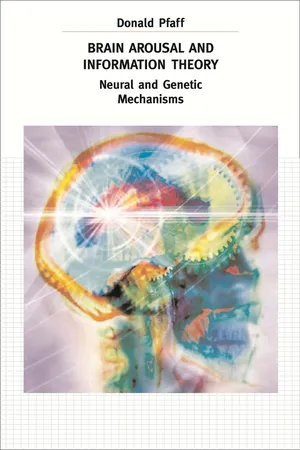
- English
- PDF
- Available on iOS & Android
About This Book
Arousal is fundamental to all cognition. It is intuitively obvious, absolutely necessary, but what exactly is it? In Brain Arousal and Information Theory, Donald Pfaff presents a daring perspective on this long-standing puzzle. Pfaff argues that, beneath our mental functions and emotional dispositions, a primitive neuronal system governs arousal. Employing the simple but powerful framework of information theory, Pfaff revolutionizes our understanding of arousal systems in the brain.Starting with a review of the neuroanatomical, neurophysiological, and neurochemical components of arousal, Pfaff asks us to look at the gene networks and neural pathways underlying the brain's arousal systems much as a design engineer would contemplate information systems. This allows Pfaff to postulate that there is a bilaterally symmetric, bipolar system universal among mammals that readies the animal or the human being to respond to stimuli, initiate voluntary locomotion, and react to emotional challenges. Applying his hypothesis to heightened states of arousal—sex and fear—Pfaff shows us how his theory opens new scientific approaches to understanding the structure of brain arousal.A major synthesis of disparate data by a preeminent neuroscientist, Brain Arousal and Information Theory challenges current thinking about cognition and behavior. Whether you subscribe to Pfaff's theory or not, this book will stimulate debate about the nature of arousal itself.
Frequently asked questions
Information
Table of contents
- Contents
- Preface and Dedication
- 1 Toward a Universal Theory of Brain Arousal
- 2 Anatomy Is Not Destiny, but a Little Neuroanatomy Helps
- 3 Arousal Is Signaled by Electrical Discharges in a System of Nerve Cells
- 4 Autonomic Nervous System Changes Supporting Arousal; the Unity of the Body
- 5 Genes Whose Neurochemical Products Support Arousal
- 6 Heightened States of Arousal: Sex Compared to Fear
- 7 Major Systems Questions about Brain Arousal Networks
- 8 Summary and Practical Importance: From Biological Mechanisms to Health Applications
- Works Cited
- Acknowledgments
- Index